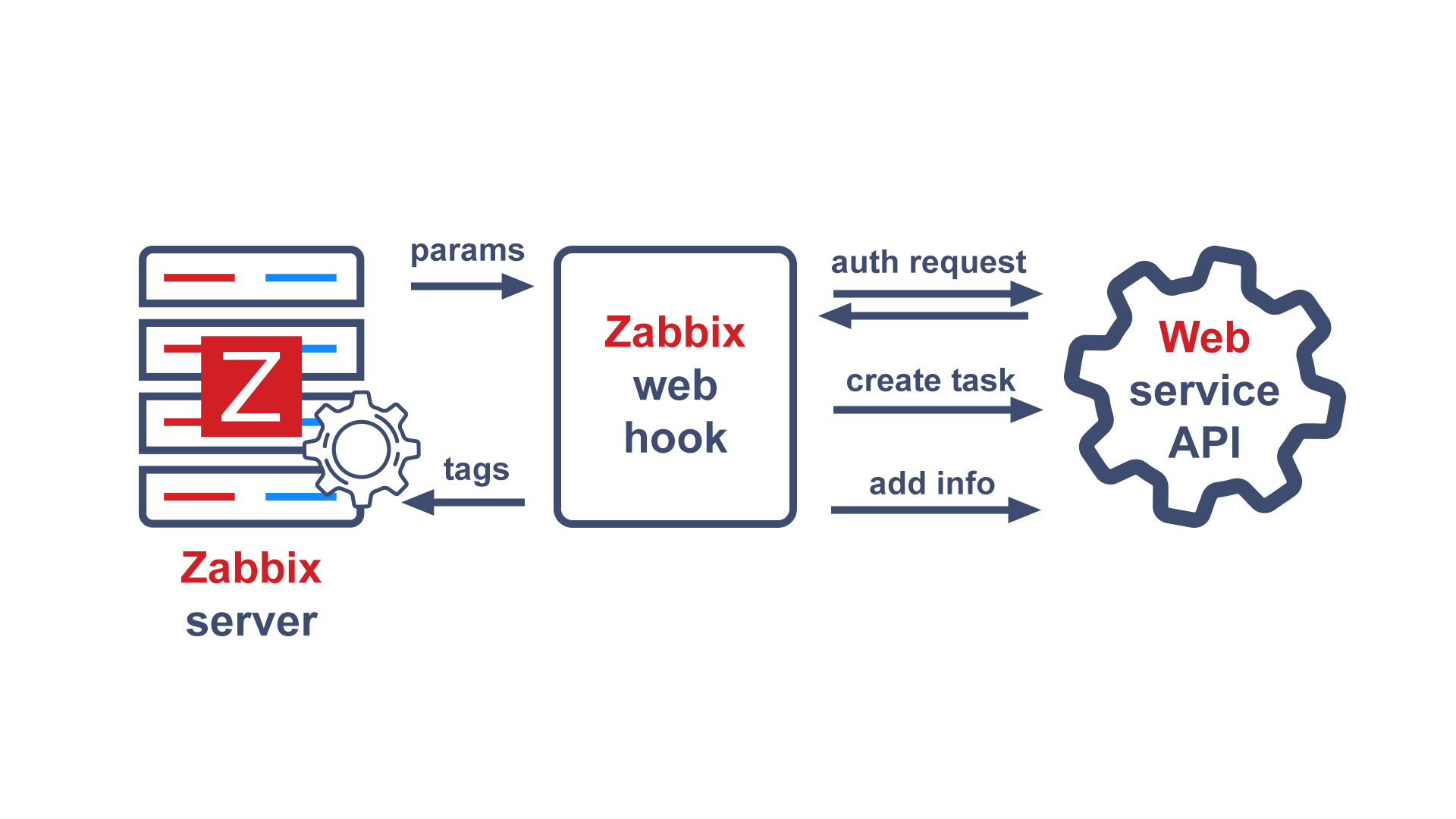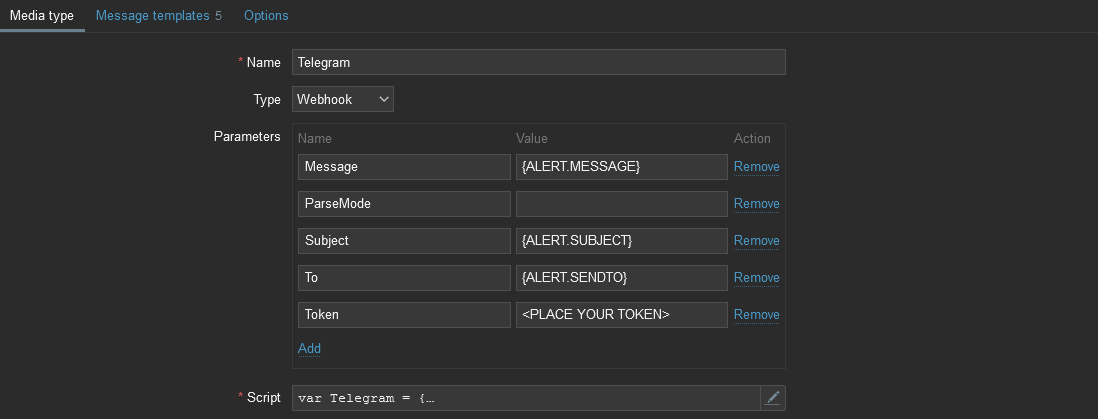Zabbix is not only a flexible and versatile monitoring system but also a convenient tool for generating alerts and integrating with existing service desks. Among the various integration methods, webhooks have become the most popular. In this blog post, we will take a look at what are webhooks, how they can be used to integrate Zabbix with an external solution, and also take a look at some use case examples for webhook integrations.
Table of Contents
What is a webhook?
Generally speaking, a webhook is a method of augmenting or altering the behavior of a web page or web application with custom callbacks. But to put it simply, a webhook is an automatic reaction to an event. If an event occurs (for example, a problem appears), then the webhook makes a call (via HTTP / HTTPS) to a third-party service to notify it about the event. Many existing solutions provide an API that allows you to interact with them via webhooks.
The webhook in Zabbix is implemented using JavaScript, so writing code does not require knowledge of a specific Zabbix syntax, and due to the prevalence of the JavaScript language, you can find many examples, tips, and guides on the Internet.
How does a webhook work?
Essentially, a webhook is code that makes a sequence of calls to achieve some result. In the case of Zabbix, a JavaScript code is executed that accesses the service API and transfers, updates, and retrieves data from there. For example, we need to open a ticket at the service desk and leave a comment on the ticket, which will contain information about the problem. For this we need:
- Log in to the service and get a token
- Make a request with the token to create a ticket
- Create a comment on the newly created ticket using a token
In different services, the details may differ, but the general idea will be preserved from service to service. 
How to use it?
Our integration team constantly communicates with the community and monitors the most popular services to develop official out-of-the-box integrations for them. At the moment, Zabbix provides a vast selection of out-of-the-box webhooks for the most popular services, and we review new ones and improve current ones every day.
In most cases, setting up a ready-made webhook comes down to 3-4 steps, which are described in the README file in the Zabbix repository. Usually, it is necessary to generate an API key in the service, set it in Zabbix, set the URL to the service endpoint URL, and specify a couple of parameters required for the webhook to work.
In addition to ready-made solutions, there is a Github community repository where custom templates and webhooks are laid out! If you are the author of a webhook or a template, please share it with the community by submitting it to this repository!
Example – Telegram webhook
The theory is good, but we are all interested in how it is implemented in practice. Let’s look at a Telegram webhook as an example. Now this messenger is very popular and it will be relevant to use it as an example.
First of all, let’s go to the Zabbix repository or navigate to the Zabbix website integrations section to read the setup instructions. In the repository, all templates and notification methods are located in the /templates folder, and for each of them, there is a README file with a detailed description.
From the Telegram side, we need to create a bot and get its token following the instructions and set it in the Token parameter.

After that, we create a user, set up a Telegram media type for this user, and in the “Send to” field we write the id of the user or group chat.

Voila! Your webhook is set up and ready to send notifications or event information!
As you may have noticed, the setup did not take much time and did not require deep knowledge. Naturally, for finer tuning, it is possible to edit the content of messages, the type of problems, intervals, and other parameters. But even without additional changes, notifications are already ready to go.
Is it difficult to write a webhook on your own?
Of course, creating a webhook requires certain skills.
First of all, knowledge of JavaScript is required. The language itself is not difficult and can be mastered relatively quickly. The Zabbix documentation site has a guideline for writing webhooks with recommendations and best practices.
Secondly, understanding how Zabbix works. This does not require an in-depth understanding of Zabbix and the ability to follow basic instructions will be enough. You can read more about setting up notification methods in the official documentation. It is important to properly configure the webhook itself, grant rights to users, and set up a notification action for the necessary triggers.
And thirdly, study the documentation of the service for which the webhook will be written. Although all APIs work on the same principle, they can differ greatly from each other in methods and request structure. It is also necessary to understand the service itself to understand how it works. It is difficult to write an integration if it is not clear how Zabbix should properly interact with the service being integrated.
Summarizing
Webhook is a modern and flexible way of integration that allows Zabbix to be a universal solution. Since the realities of our world imply a large number of different systems, and as a result – many people working together – webhooks are becoming an indispensable tool in notification automation. A properly written and configured webhook is an effective solution for flexible notifications.
In the next article, together we will learn the basic methods and requests that are needed to send alerts, receive updates and assign tags. For this purpose, we will completely inspect some webhook in close detail.
Questions
Q: We have a ready-made notification system built on scripts. Does it make sense to rewrite it to a webhook?
A: Certainly. Firstly, the webhook is executed natively in Zabbix, which will be much more productive than in an external script. Secondly, the webhook is much more flexible, more functional, and much easier to make changes to.
Q: We have a service for which we would like to write an integration, but we do not have qualified specialists who could do it. Is it possible to request such integration from Zabbix?
A: Yes, if you are a Zabbix partner, you can leave a request to create such integration.







 Prev Post
Prev Post 





It would be interesting to support Python in the creation of the script that consumes the Webhook.